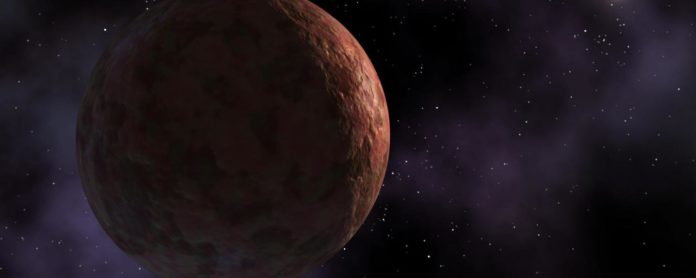A new study by the scientists at the CU Boulder offered up a new theory for the existence of planetary oddities like Sedna—an icy minor planet that circles the sun at a distance of nearly 8 billion miles. The study suggests that bumper car-like interactions at the edges of our solar system may explain the dynamics of strange bodies called “detached objects”.
CU Boulder Assistant Professor Ann-Marie Madigan said, “There are so many of these bodies out there. What does their collective gravity do? I think we can solve a lot of these problems by just taking into account that question.”
It was challenging for scientists to explain why Sedna and a handful of other bodies at that distance look separated from the rest of the solar system. There is also a theory that suggests unseen ninth planet lurking beyond Neptune may have kicked up the orbits of these detached objects.
Scientists quantified the orbits of Sedna and its ilk may result from these bodies jostling against each other and space debris in the outer solar system. Unlike that unique ninth planet, Sedna and other separated humongous, orbits that bring them no place near huge planets like Jupiter or Neptune. How they got out there without anyone else and remains a continuous mystery.
Scientists actually are developing computer simulations under the guidance of Jacob Fleisig, to explore the dynamics of the detached objects. Using the simulations, they had calculated that the orbits of icy objects beyond Neptune circle the sun like the hands of a clock. Some of those orbits, such as those belonging to asteroids, move like the minute hand, or relatively fast and in tandem.
Fleisig said, “You see a pileup of the orbits of smaller objects to one side of the sun. These orbits crash into the bigger body, and what happens is those interactions will change its orbit from an oval shape to a more circular shape.”
In other words, Sedna’s orbit goes from normal to detached, entirely because of those small-scale interactions. The team’s findings also fall in line with recent observations.
Scientists noted, “The findings may provide clues around another phenomenon: the extinction of the dinosaurs. As space debris interacts in the outer solar system, the orbits of these objects tighten and widen in a repeating cycle. This cycle could wind up shooting comets toward the inner solar system—including in the direction of Earth—on a predictable timescale.”
The researchers presented their findings today at a press briefing at the 232nd meeting of the American Astronomical Society, which runs from June 3-7 in Denver, Colorado.
